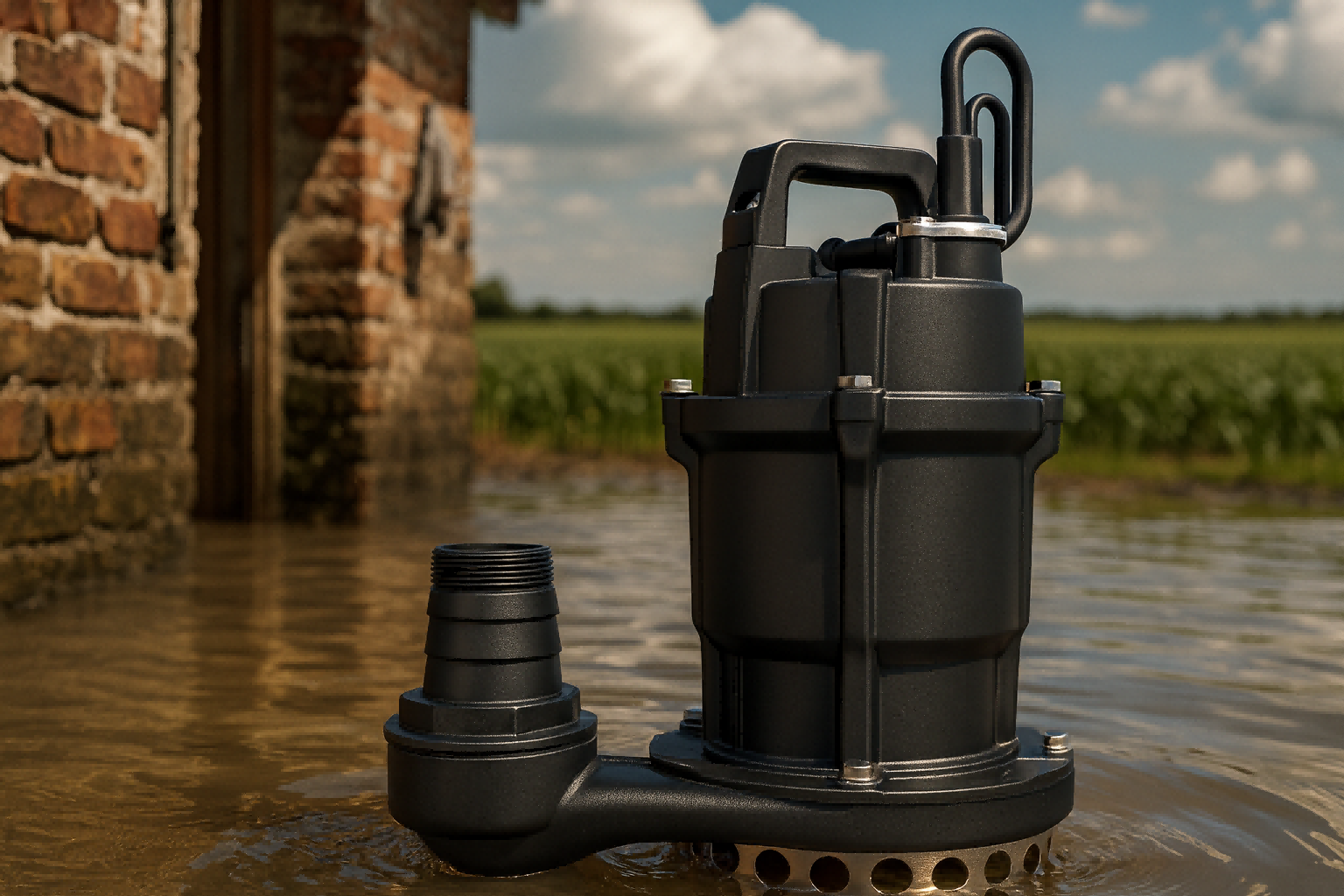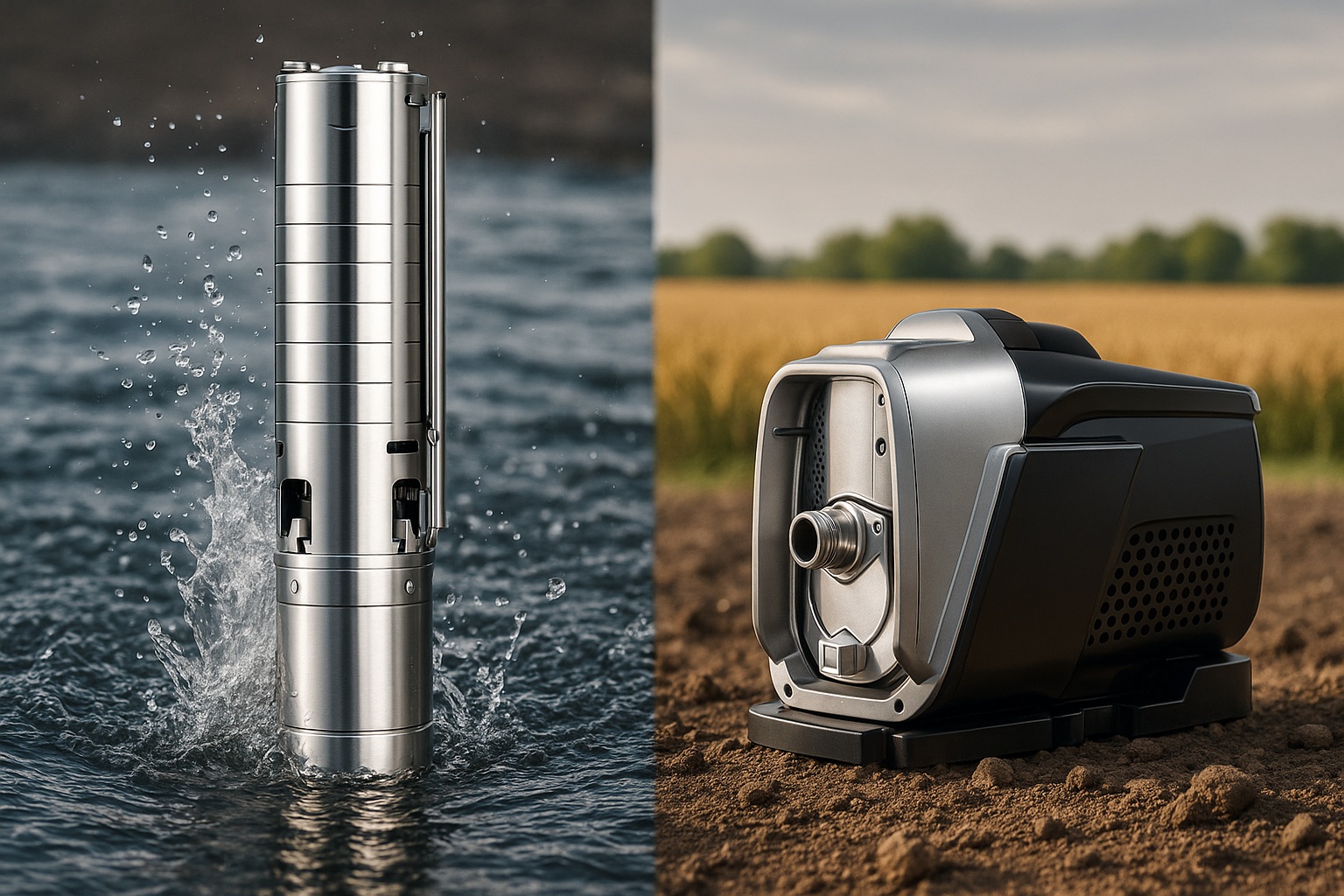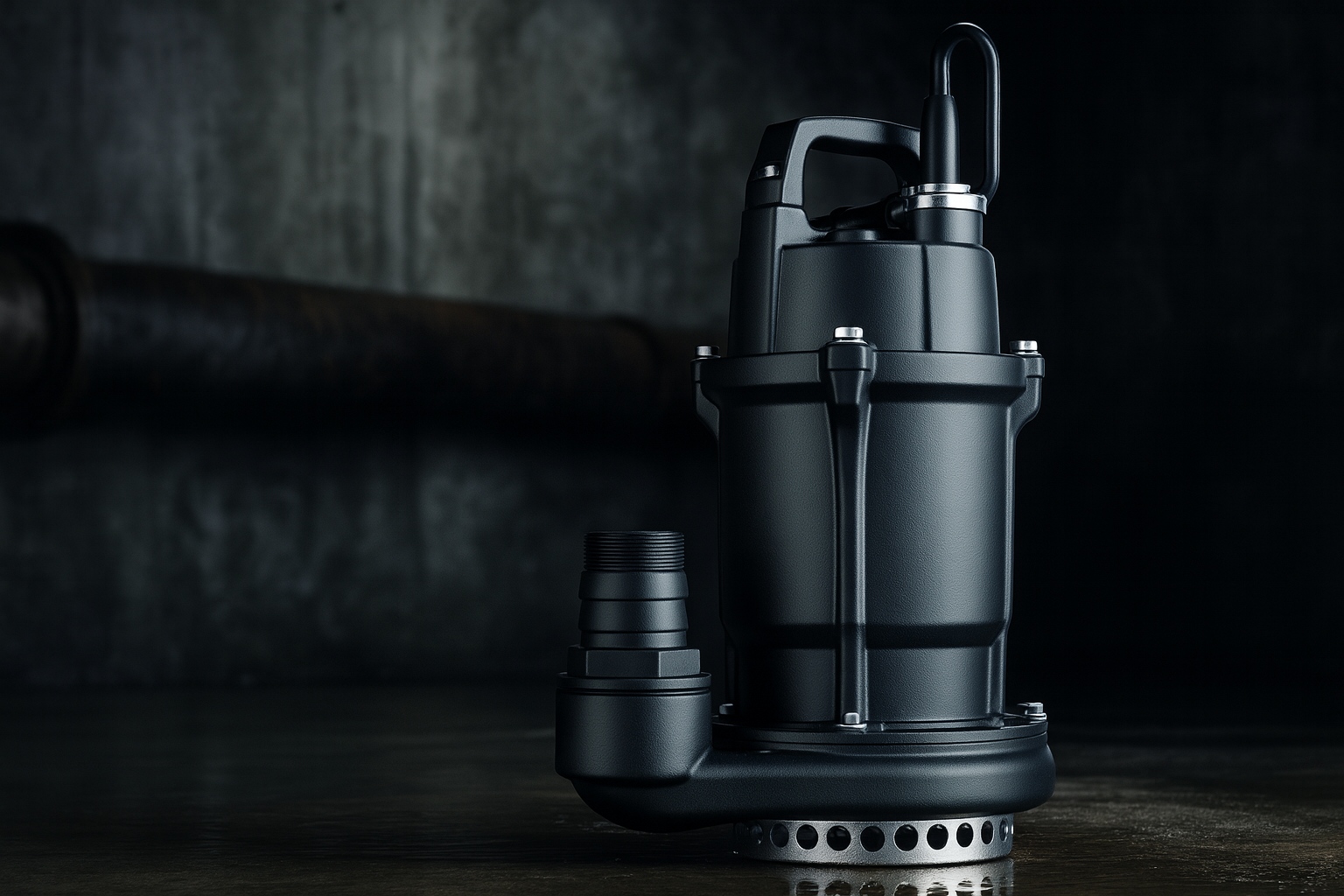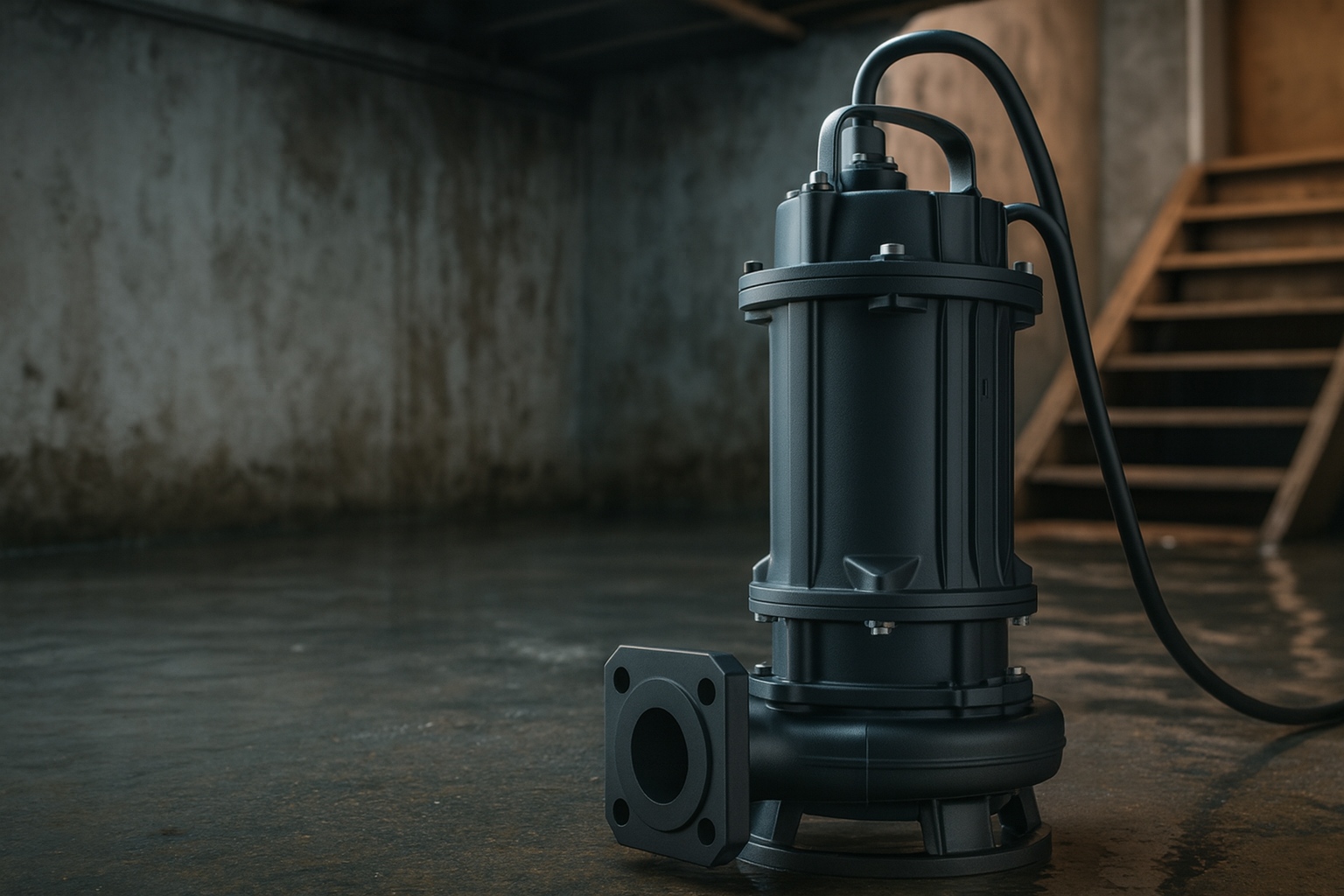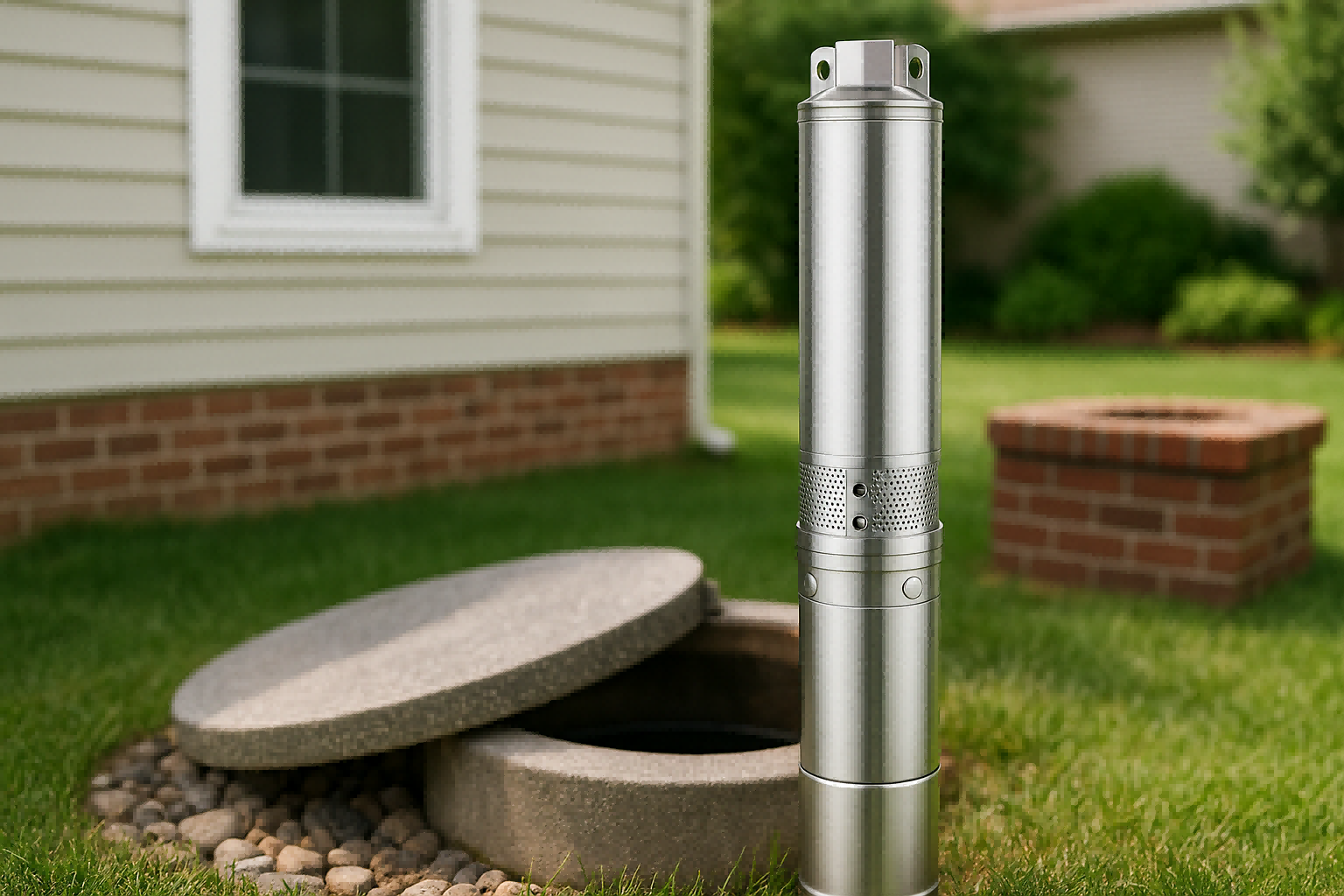Tired of weak showers and fluctuating water pressure?
This ruins your daily comfort.
An automatic booster pump provides a powerful, consistent flow exactly when you need it.
An automatic booster pump uses sensors to detect a drop in water pressure when a tap is opened. It then activates a motor to spin an impeller, which increases the water pressure and flow throughout your plumbing system. The pump stops automatically when the tap is closed.
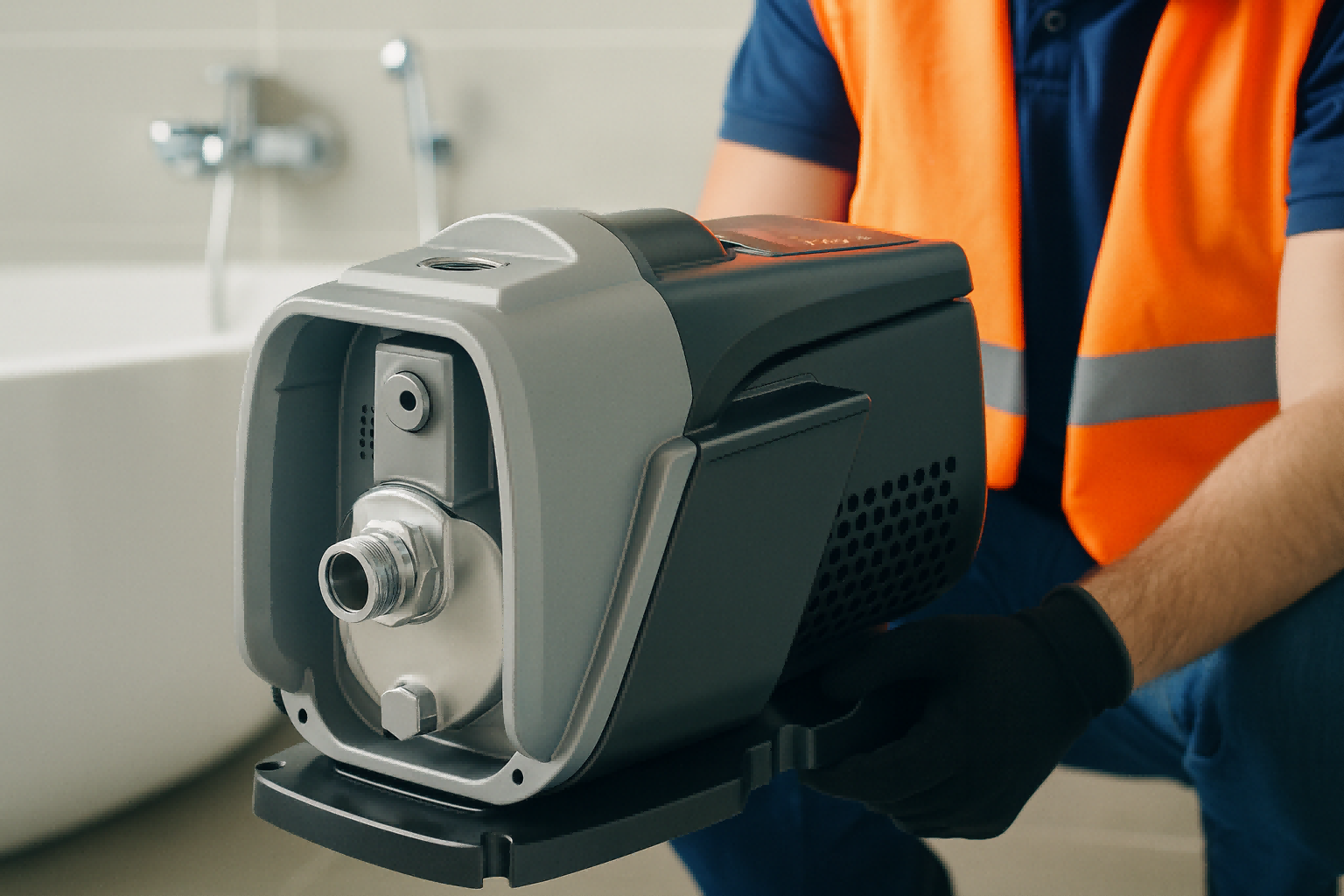
Understanding this technology can feel complex.
Let’s break down the key parts that make these pumps so smart and efficient.
Dive in to see how each component works together to give you perfect water pressure.
Core Technology: The Brains and Brawn of the Pump
Are noisy pumps and sudden water surges a problem?
This can be disruptive and damage pipes.
Modern pumps use smart technology for smooth, quiet, and stable water delivery.
The core of a modern booster pump is its motor and controller. A Permanent Magnet Synchronous Motor (PMSM) paired with a Variable Frequency Drive (VFD) creates an efficient, quiet system. This combination constantly adjusts its speed to maintain a steady water pressure, eliminating fluctuations and saving energy.
A pump's performance is defined by how its internal technology works together.
The motor provides the power, while the electronic drive acts as the brain.
This pairing is crucial for delivering water exactly how you need it, without the noise and inefficiency of older pump models.
Let's explore the key features that this advanced technology enables.
The Power of Smart Control
The intelligent control system is the heart of the pump's efficiency.
It uses a Variable Frequency Drive (VFD) to manage the motor.
The VFD changes the electrical frequency supplied to the motor, which precisely controls its speed.
This means the pump only works as hard as it needs to.
This active management provides several key benefits.
- Constant Pressure: The system maintains a stable pressure, so your shower won't weaken when someone flushes a toilet.
- Ultra-Quiet Operation: The smooth operation of the motor and controller keeps noise levels extremely low, often quieter than a library.
- Wide Voltage Range: These smart pumps can handle unstable power grids, operating perfectly even when voltage fluctuates.
Soft Start for Longevity
A critical function for protecting the pump and your plumbing is the "soft start" feature.
Instead of starting abruptly at full power, the pump gradually increases its speed.
This gentle acceleration has significant advantages.
It prevents a sudden jolt of pressure, known as water hammer, which can damage pipes and joints.
It also reduces mechanical stress on the pump's internal parts, like bearings and seals.
This controlled start-up process greatly extends the life of the entire system.
The pump also uses a "soft stop" to ramp down gently when a tap is closed.
Excellence in Mechanical and Material Engineering
Does worrying about pump breakdowns and expensive repairs sound familiar?
Low-quality materials lead to corrosion and early failure.
A well-engineered pump uses premium, durable materials to ensure a long and reliable service life.
High-quality booster pumps are built with carefully chosen materials. They often feature corrosion-resistant stainless steel for parts like the impeller and pump head. The internal motor components use high-grade materials to manage heat and improve efficiency, ensuring the pump lasts for years.
The physical construction of a booster pump is just as important as its electronic controls.
The choice of metals, plastics, and internal components directly impacts its durability, efficiency, and how long it will last.
A commitment to high-quality engineering means focusing on every detail, from the motor windings to the bearings.
Let's look closer at the specific materials that make a modern pump a reliable investment.
The Motor's Inner Strength
The motor is the workhorse of the pump, and its design determines its efficiency and lifespan.
Advanced motors are built with superior components to handle demanding tasks.
These components work in unison to create a powerful and durable core.
| Component | Material/Feature | Benefit |
|---|---|---|
| Stator | High-Grade Silicon Steel | Reduces energy loss and improves efficiency. |
| Insulation | Class F Wire | Resists high temperatures for reliability. |
| Rotor Magnet | Advanced Ferrite | Maintains magnetic strength at high heat. |
| Bearings | Premium Precision | Ensures quieter operation and longer life. |
This focus on internal quality leads to a motor that runs cooler.
A cool-running motor is a long-lasting motor.
Better heat dissipation can extend the motor's operational life significantly.
The Hydraulic Core
The parts of the pump that directly handle water must be resistant to corrosion.
The impeller is the spinning disc that pushes water and creates pressure.
Using a material like AISI304 stainless steel for the impeller is a hallmark of a quality pump.
This material is exceptionally durable and will not rust or degrade over time.
This ensures the pump's performance remains consistent throughout its service life.
The pump's outer housing is also important.
Using UV-resistant plastics prevents the casing from becoming brittle when exposed to sunlight, making it suitable for outdoor installations.
Uncompromising Electronic Reliability
Ever had an electronic device fail due to moisture or dust?
This is a common point of failure for equipment in damp environments.
Advanced pumps protect their sensitive electronics by completely sealing them from the elements.
To ensure long-term reliability, the main controller board (PCB) in a top-tier booster pump is often fully sealed. This process, known as potting, involves encasing the electronics in a protective compound. This makes the controller 100% waterproof, dustproof, and resistant to condensation.
A pump's "brain" is its electronic controller board.
This circuit board is vulnerable to the very environment it operates in—one with potential moisture, humidity, and temperature changes.
A standard, unprotected circuit board is likely to fail in these conditions.
The best way to guarantee electronic longevity is to isolate the controller from the environment completely.
The Ultimate Shield for Electronics
The most robust method for protecting the pump's controller is called potting.
This involves pouring a special epoxy or resin compound over the entire Printed Circuit Board (PCB).
The compound hardens, creating a solid, impenetrable block around all the sensitive electronic components.
This shield delivers several crucial advantages.
- Total Waterproofing: A potted controller achieves a high waterproof rating, often IP67. This means it can be submerged in water without damage. It makes the electronics immune to rain, splashes, and high humidity.
- Dust and Debris Protection: The seal prevents any dust or small particles from getting onto the circuit board and causing a short circuit.
- Vibration Resistance: The solid block of potting material also helps to secure components in place, protecting them from damage caused by vibration during operation.
A Longer Lifespan
Moisture is the number one enemy of electronics.
It causes corrosion on circuit pathways and can lead to short circuits and complete failure.
By potting the PCB, manufacturers can prevent nearly all moisture-related failures.
This single design choice can drastically increase the lifespan of the pump's control system.
It often extends the controller's reliable service life by several years.
This makes the pump a much more dependable and cost-effective solution over the long term.
A Comprehensive Suite of Protection Functions
What happens if your water source runs dry or the power spikes?
Without safeguards, these events could destroy your pump's motor.
Modern intelligent pumps have a built-in "shield" of multiple safety features that constantly monitor conditions.
An intelligent booster pump is equipped with numerous self-protection functions. These systems monitor for issues like dry running, overheating, power surges, and freezing. If a fault is detected, the pump will automatically shut down to prevent damage and may attempt to restart itself later when conditions are safe.
A smart pump is designed to protect itself from a wide range of potential problems.
This is achieved through a network of sensors and intelligent software.
This system acts as a vigilant guardian, ensuring the pump operates safely and reliably under various conditions.
These protections are not just add-ons; they are essential for the pump's longevity and for safeguarding your entire water system.
Let's break down the different types of protection.
Electrical and Thermal Protections
The pump's controller continuously monitors the electrical supply and its own temperature.
This allows it to react instantly to dangerous conditions.
Key Electrical Safeguards
- Voltage Protection: Shuts the pump down if the input voltage is too high or too low, protecting the electronics from damage.
- Overcurrent Protection: If the motor draws too much electrical current, which can happen if it's jammed, the system stops to prevent burnout.
- Stall Protection: If the impeller is blocked and cannot spin, the pump will shut off to avoid motor damage.
Key Thermal Safeguards
- Overheating Protection: Sensors on the driver board and within the motor windings monitor temperatures. If they get too hot, the pump stops to cool down.
- High Water Temperature Protection: The pump can also detect if the water itself is too hot, protecting internal seals and components.
System and Sensor Protections
Beyond electrical and thermal issues, the pump also protects against system-level problems.
The most critical of these is "dry run" protection.
Running a pump without water will quickly destroy it.
An intelligent pump detects this condition immediately.
It then initiates a smart recovery sequence.
It will stop, wait for a period, and then try to restart to see if water has returned.
This process is repeated with longer waiting intervals to save energy while it waits for the water source to be restored.
Other vital system protections include:
- Antifreeze Protection: In cold climates, the pump can automatically run for a few seconds to prevent the water inside from freezing and cracking the housing.
- Pipeline Leak Warning: The system can detect very small, slow drops in pressure that might indicate a leak in your plumbing, alerting you to a potential problem.
- Sensor Failure Warnings: The pump even performs self-diagnostics. If one of its own sensors fails, it can alert you to the specific issue.
Intuitive User Interface and Real-Time Monitoring
Are complex controls and confusing displays a source of frustration?
Advanced technology shouldn't be difficult to use.
A well-designed pump provides a simple interface for easy operation and clear, real-time feedback on its status.
Modern booster pumps are designed for user-friendliness. They feature a simple control panel with buttons for turning the pump on/off and adjusting pressure. A digital display and clear LED indicators show the current operating status, power consumption, and any system alerts at a glance.
Even the most sophisticated pump is only useful if it can be easily controlled.
The goal of a good user interface is to make complex operations simple.
This is achieved through a combination of intuitive buttons, a clear digital display, and easy-to-understand indicator lights.
This allows you to not only set the pump up but also to understand what it's doing at any moment.
Let's explore how these features make the pump accessible to everyone.
Simple Controls, Powerful Functions
A good interface provides direct access to the most important functions.
Most daily operations can be handled with just a few button presses.
- Power On/Off: A single press is all it takes to start or stop the pump.
- Pressure Adjustment: Simple 'Up' and 'Down' buttons allow you to set the desired water pressure with ease.
- Factory Reset: A long press can restore the pump to its original default settings if needed.
Despite this simplicity, the interface also provides access to deep system data for advanced users or technicians.
Live Data at Your Fingertips
An advanced feature on many pumps is the ability to cycle through real-time operating data.
By pressing a button, you can see live information on the digital display.
This gives you a powerful insight into the pump's performance.
| Display Code | Parameter | What It Tells You |
|---|---|---|
A.xx |
Water Temperature | The temperature (°C) of the water in the pump. |
P.xxx |
Real-Time Power | How much power (Watts) the pump is using. |
xxxx |
Motor Speed | The motor's current speed in RPM. |
U.xxx |
Input Voltage | The voltage of the incoming power supply. |
t.xx |
PCB Temperature | The temperature of the main controller board. |
At-a-Glance Status Indicators
LED lights provide immediate visual feedback on the pump's status.
You don't need to read the display to know what's going on.
A quick look can tell you if the pump is running normally, if there is a fault, or what mode it's in.
Typical indicators include lights for:
- Constant Pressure Mode: Shows the pump is actively maintaining pressure.
- Water Shortage: A clear warning that the pump has stopped due to a lack of water.
- Voltage Fault: Indicates an issue with the power supply.
- Power Level: A series of lights may show how hard the pump is working, from low to high output.
Conclusion
An automatic booster pump combines a powerful motor, durable materials, and smart electronics.
It works by using sensors and a VFD controller to deliver constant, reliable water pressure efficiently and quietly.
FAQs
What is the main purpose of a booster pump?
A booster pump increases low water pressure and flow.
It provides the extra boost needed for a consistent supply to showers, taps, and appliances throughout a building.
Can a booster pump run continuously?
Modern VFD booster pumps are designed for continuous operation.
Their smart controls adjust speed to meet demand, preventing overheating and allowing them to run safely for long periods.
Where should a booster pump be installed?
A booster pump is typically installed on the main water line after the water meter.
This allows it to boost pressure for the entire house or building.
Do I need a pressure tank with a booster pump?
Many modern VFD pumps have small built-in pressure tanks.
These tanks reduce pump cycling for small water uses and help prevent water hammer, extending the pump's life.
How do I know what size booster pump I need?
Pump sizing depends on your home's water demand and required pressure lift.
Consider the number of fixtures and the height the water needs to be pumped to make a decision.
How much electricity does a booster pump use?
VFD booster pumps are very energy-efficient.
They only run at the speed needed, which can reduce electricity consumption by up to 50% compared to traditional fixed-speed pumps.
Can a booster pump be used for well water?
Yes, booster pumps are often used with well systems.
They are installed after the well's pressure tank to increase water pressure throughout the house.


